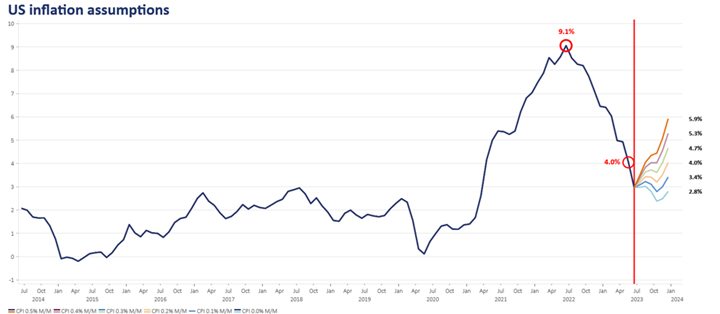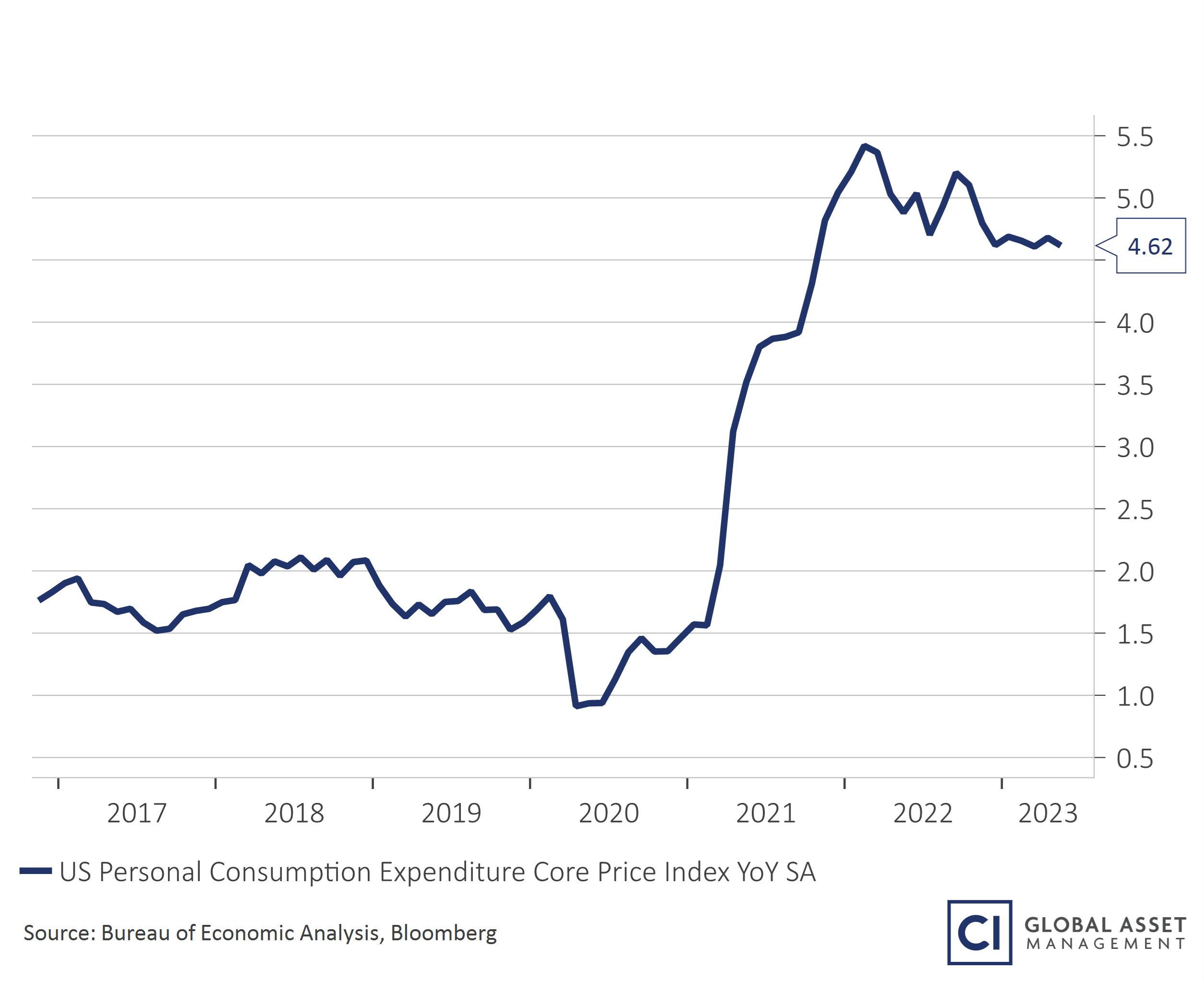Inflation: So Far, So Good, but the Road Gets Tougher
Stephen Lingard - 31 juillet 2023
Recent progress in the battle against inflation may have been superficial. Find out why inflation is expected to rise again and remain “sticky” in the latter half of 2023.
Headline inflation has been the single biggest macro factor affecting financial markets over the past 18 months due to the resulting impact on global monetary policy. Central banks around the world have scurried to remove monetary accommodation by raising short-term policy rates at the fastest pace in decades. This has been done to avert a 1970s-style boom in inflation, which saw short-term interest rates become unhinged as they soared from 5% to nearly 15% by 1980. Such a rise in interest rates today would have a devastating impact on asset prices, so the June CPI number was a breath of fresh air as US inflation continued its decline towards target, falling to 3.0% year-over-year from 9.1% a year ago. However, the latest number was widely expected to be a good number due to base effects. This means that significant monthly inflation increases from over a year ago would be dropped from the calculation. Consider that in the first six months of 2022, the monthly CPI figure averaged 0.8% which represents close to 10% inflation on an annualized basis. Clearly, dropping this string of ugly monthly inflation numbers was critical to the recent fall in inflation to 3%. And what was principally behind this inflation surge in the first six months of 2022? The devastating war in Ukraine, which saw the price of Brent crude almost double to a high of $130, subsequently boosting food inflation and pushing many related prices significantly higher. This was on top of the higher inflationary effects of supply chain disruptions caused by COVID-19, which are now believed to have mostly worked their way out of the monthly figures.
Dimmer outlooks ahead
The graph below highlights that because of base effects dropping out of the calculation, inflation is set to rise again in all but the most optimistic monthly inflation reports to come later this year. Consider a range of monthly inflation numbers starting with 0.0% to 0.5% and see the projected impact for year-over-year inflation figures going into the end of this year and beyond.

Source: U.S. Bureau of Labor Statistics (BLS), Macrobond
What if we exclude the volatile effects of food and energy which were impacted by Russia’s shameful invasion? Using US PCE, the Fed’s preferred measure of core inflation, success in lowering inflation has been more muted as it is down from a high of 5.4% in the first half of 2022, to the latest May figure of 4.6%, representing less than a 1% decline from peak. It is this core inflation dynamic that economists and investors have termed “sticky inflation” as it doesn’t seem to want to move lower as quickly as headline inflation has done. This can be seen in the graph below.
US Personal Consumption Expenditure Core Inflation Y/Y
Pressure will continue until something breaks
Core inflation, like US PCE, tends to be driven more by fluctuations in service inflation than goods inflation, so we need that part of the economy to slow. Service inflation tends to be tied to wages, so strong wage pressures in the economy currently suggest service inflation will take longer to roll over than the goods inflation which drove the significant improvement in headline inflation as it fell sharply over the past year. Slower wages are a function of the level of unemployment so, with the unemployment rate at historically low levels, the Fed will continue to try to weaken the labour market by slowing the level of economic growth. But keep in mind, the Fed has raised its overnight policy rate by 500 bps in a little over a year, which is extreme in terms of tightening speed. We will likely continue to see the lagged and variable effects of monetary policy on the economy and further significant increases are unlikely to be needed.
Portfolio positioning
In terms of positioning, we are slightly underweight bonds as sticky inflation and resilient growth mean interest rates may stay high, disappointing investors looking for capital gains from fixed income. Meanwhile, higher inflation is likely to keep equity valuations in check while mounting pressure on corporate profit margins which have been falling as revenues fall faster than expenses. As such, cash is a tactical overweight for this stage of the cycle where stagflation (higher inflation, lower growth) is a higher-than-normal probability.
And so, inflation will continue to be an important issue at least into 2024, and possibly beyond. There is no doubt we have made significant progress on inflation, but it’s too early to declare victory.
Summary
Headline inflation has been the most influential macro factor globally over the past 18 months, triggering central banks to drastically revise their monetary policy to avoid a crisis. June US CPI data appeared to suggest a decline in inflation, however the dip can be attributed to base effects as significant increases from over a year ago have been dropped from the calculation. Therefore, core inflation is widely expected to surge yet again and remain sticky into 2024.
About the Author
Stephen Lingard
Stephen Lingard, Senior Vice President, Co-Head of Multi-Asset, brings first-hand global experience to his role as he has studied and worked in Europe, the US, and Asia over his 27+ year career. He joined CI GAM in 2019 as the multi-asset portfolio and research lead, with a macro, equity and alternative strategy focus. Prior to CI GAM, Stephen was Head of Multi-Asset Solutions with Franklin Templeton (Canada/Asia). Before that, he was an investment manager with Fidelity Investments (US & Canada), and prior to that, he was a Bond dealer at Société Générale Asia (Singapore). Stephen is a CFA charterholder with a BSc from Western University and holds an MBA from EU Business School. He is also a member of the Toronto CFA Society and spends his free time with North Toronto Soccer and Leaside Hockey.
